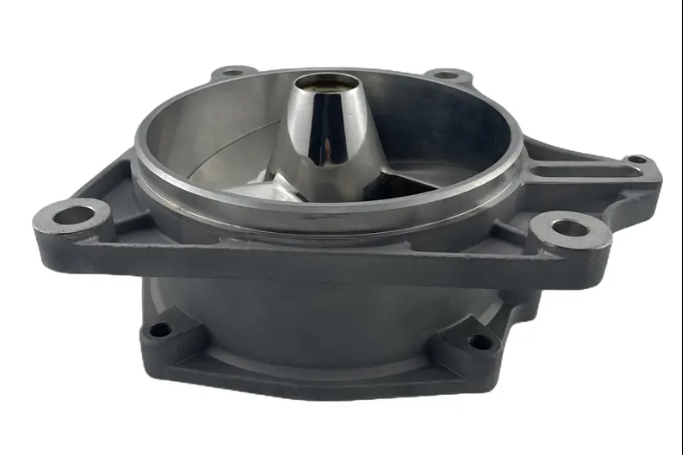Nimonic Alloy Nuclear Parts Hot Isostatic Pressing (HIP) Foundry
Introduction to Nimonic Alloys for Nuclear Applications
Nimonic alloys are nickel-based superalloys engineered for extreme thermal, mechanical, and corrosive environments, making them highly suitable for critical nuclear components. As a specialized hot isostatic pressing (HIP) foundry, Neway AeroTech manufactures custom Nimonic alloy nuclear parts to meet the highest standards of safety, durability, and performance.
Our integrated HIP foundry process ensures near-net-shape components with >99.9% density, uniform grain structure, and improved mechanical integrity—ideal for high-stress, high-temperature nuclear environments such as core internals, control assemblies, and reactor support hardware.
Technical Challenges of Nimonic Parts in Nuclear Environments
Nuclear-grade Nimonic components must withstand complex performance requirements:
Radiation Resistance: Materials must resist neutron-induced swelling and embrittlement over extended service life.
High-Temperature Strength: Components must retain creep resistance and fatigue life above 800°C.
Corrosion Resistance: Excellent stability in high-pressure steam, borated water, and oxidizing reactor atmospheres is essential.
Defect-Free Microstructure: Elimination of porosity, inclusions, and microcracks is vital for pressure-bearing parts.
Hot Isostatic Pressing Process for Nimonic Alloy Nuclear Parts
Powder Compaction & Preform
Spherical gas-atomized Nimonic powder (particle size 20–50 µm) placed into hermetically sealed steel cans.
Degassed and pre-compacted to form containerized billets.
HIP Cycle
Components subjected to isostatic pressure of 100–150 MPa and temperatures of 1150–1250°C.
Inert argon environment ensures zero oxidation and full material consolidation.
Final density exceeds 99.9%, with uniform isotropic properties.
Finish Machining & Heat Treatment
CNC machining ensures tolerances as tight as ±0.01 mm for sealing, rotating, or interfacing parts.
Solution and aging heat treatments optimize phase distribution, hardness, and creep resistance.
Comparison: HIP vs. Traditional Nimonic Manufacturing
Property | HIP Consolidation | Forging | Casting |
|---|---|---|---|
Density (%) | >99.9 | 96–98 | 90–94 |
Defect Rate | Minimal | Moderate | High |
Grain Uniformity | Excellent | Moderate | Poor |
Geometry Capability | High | Medium | Low |
Ideal for Nuclear Parts | Yes | Limited | Not recommended |
Nimonic Grades for HIP Nuclear Component Production
Alloy | Yield Strength (MPa) | Max Service Temp (°C) | Radiation Resistance | Nuclear Application |
|---|---|---|---|---|
690 | 920 | Excellent | Reactor turbine blades, core guides | |
760 | 980 | Excellent | Nuclear fastener systems, bolts, brackets | |
690 | 950 | Superior | Radiation shielding support structures | |
755 | 1000 | Superior | High-pressure reactor vessel seals | |
650 | 850 | Good | Instrumentation brackets and control guides |
Alloy Selection Strategy for HIPed Nuclear-Grade Parts
Nimonic 90: Ideal for reactor turbine components exposed to stress and cyclic thermal loads up to 920°C.
Nimonic 105: Excellent for nuclear-grade bolts and tie rods where high strength (760 MPa) and fatigue resistance are essential.
Nimonic PE16: Optimized for radiation shielding systems due to its superior irradiation resistance and thermal strength at 950°C.
Nimonic 263: Preferred for sealing and rotating parts under high pressure and high heat with exceptional creep resistance.
Nimonic 80A: Chosen for moderately stressed assemblies requiring good corrosion resistance and mechanical reliability.
Post-Processing and Testing of HIPed Nimonic Components
Heat Treatment: Solution treatment at 1150°C and aging at 800–850°C improves strength and stability.
CNC Machining: Precision finishing down to ±0.01 mm for mating surfaces and interfaces.
Material Testing & Analysis: Includes tensile, creep, impact, SEM, and ultrasonic testing.
Surface Finishing: Polishing or coating available for enhanced corrosion or erosion resistance.
Industry Case Study: HIPed Nimonic 263 Seal Rings for Nuclear Steam Systems
Neway AeroTech produced HIP-consolidated Nimonic 263 seal rings for nuclear steam turbines operating at 960°C and 25 MPa. The powder was HIPed at 1200°C and 140 MPa, followed by aging at 815°C.
The components achieved >99.9% density, no measurable porosity (per ASTM E45), and tensile strength above 750 MPa. Radiographic, ultrasonic, and SEM testing confirmed zero internal flaws. Service trials showed a 40% lifespan improvement over forged alternatives.
FAQs on Nimonic HIP Manufacturing for Nuclear Applications
What are the benefits of HIP for Nimonic parts in nuclear systems?
Which Nimonic grades are best suited for high-radiation environments?
How do you ensure defect-free HIPed parts for safety-critical components?
What certifications and testing standards do you meet for nuclear customers?
Can you supply fully machined and heat-treated HIPed Nimonic components?

